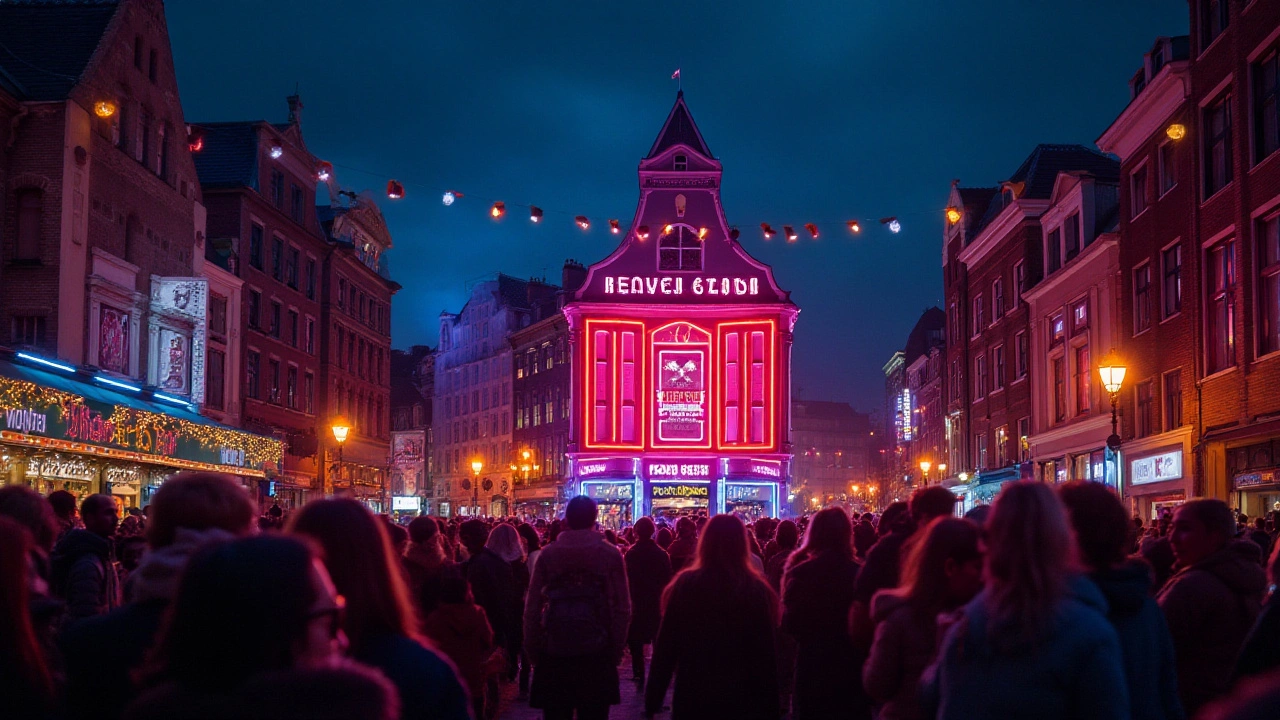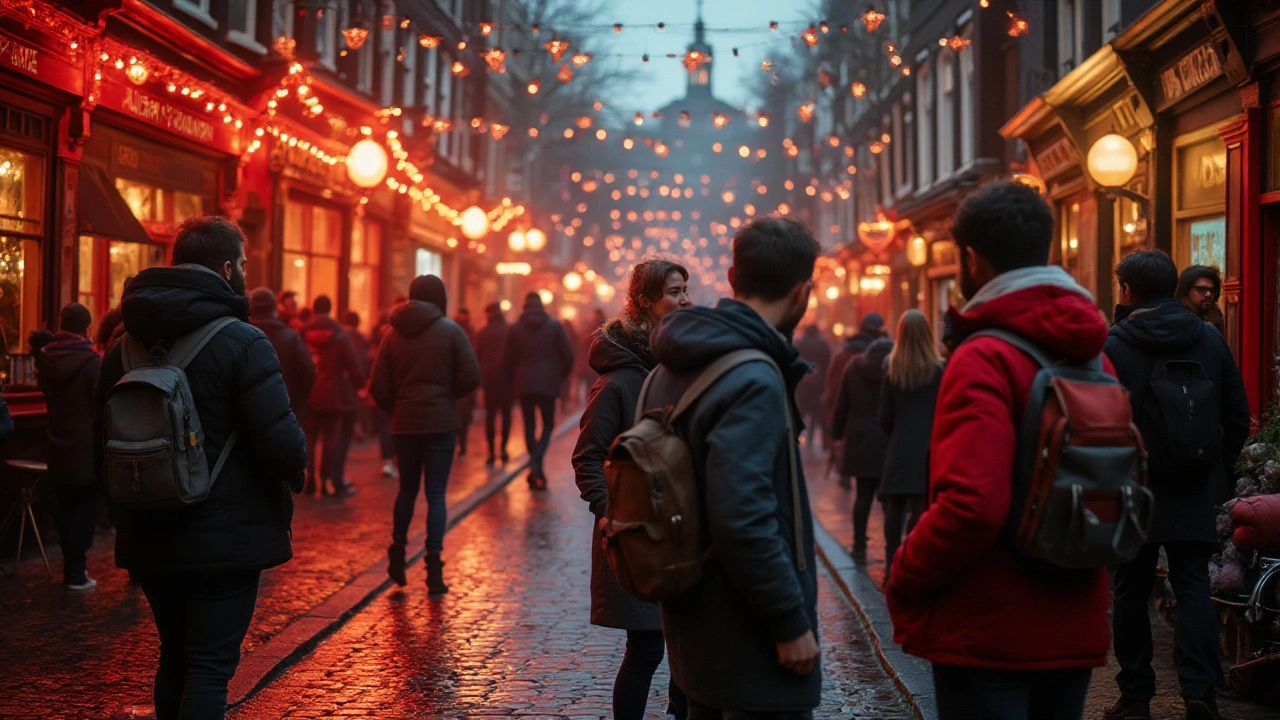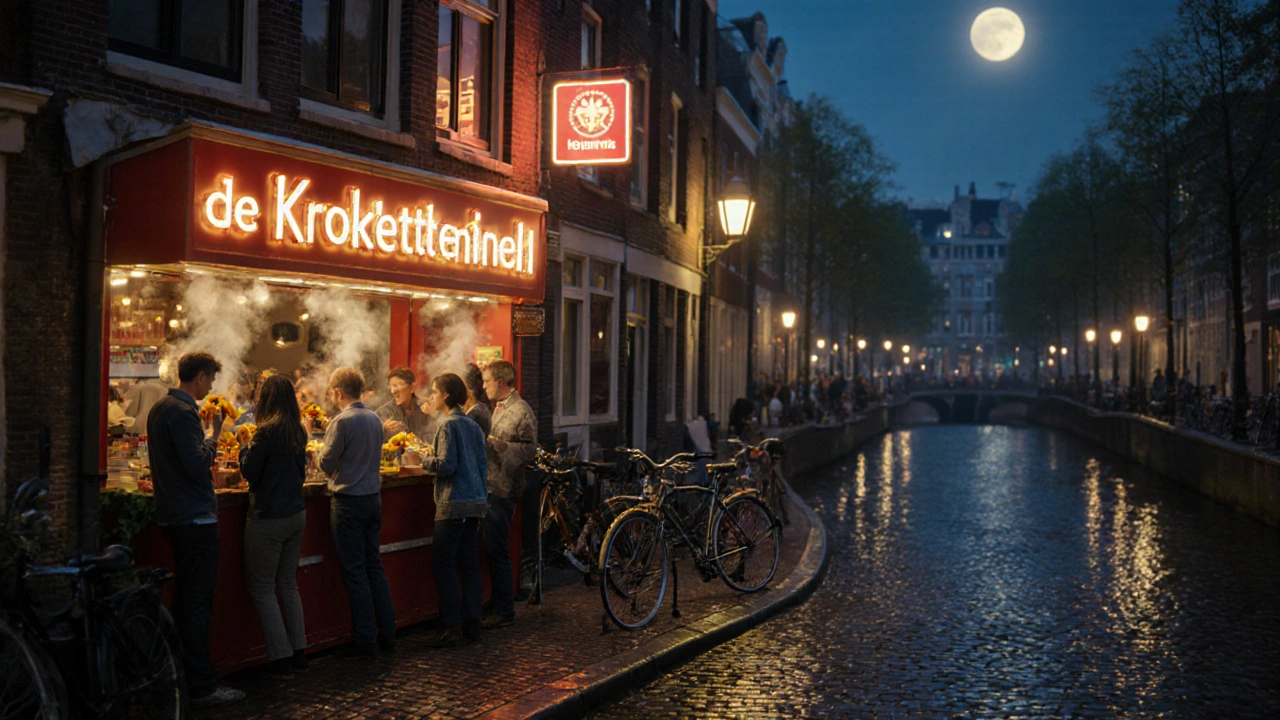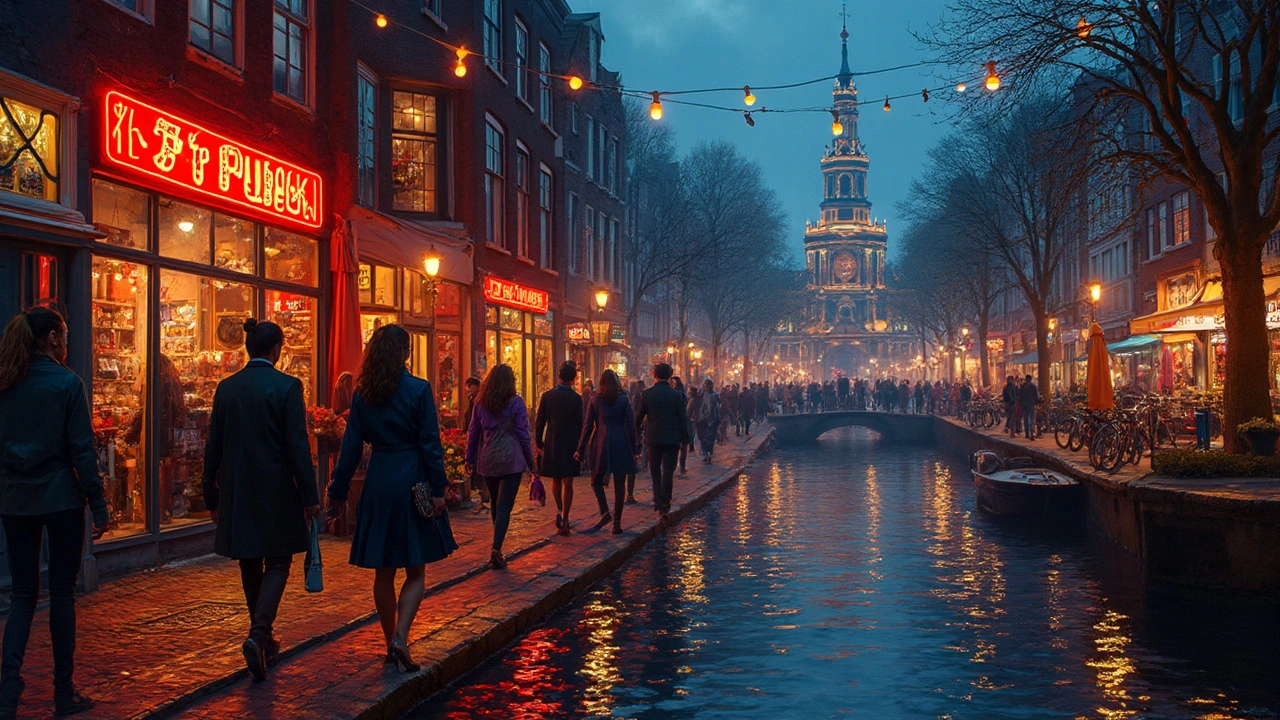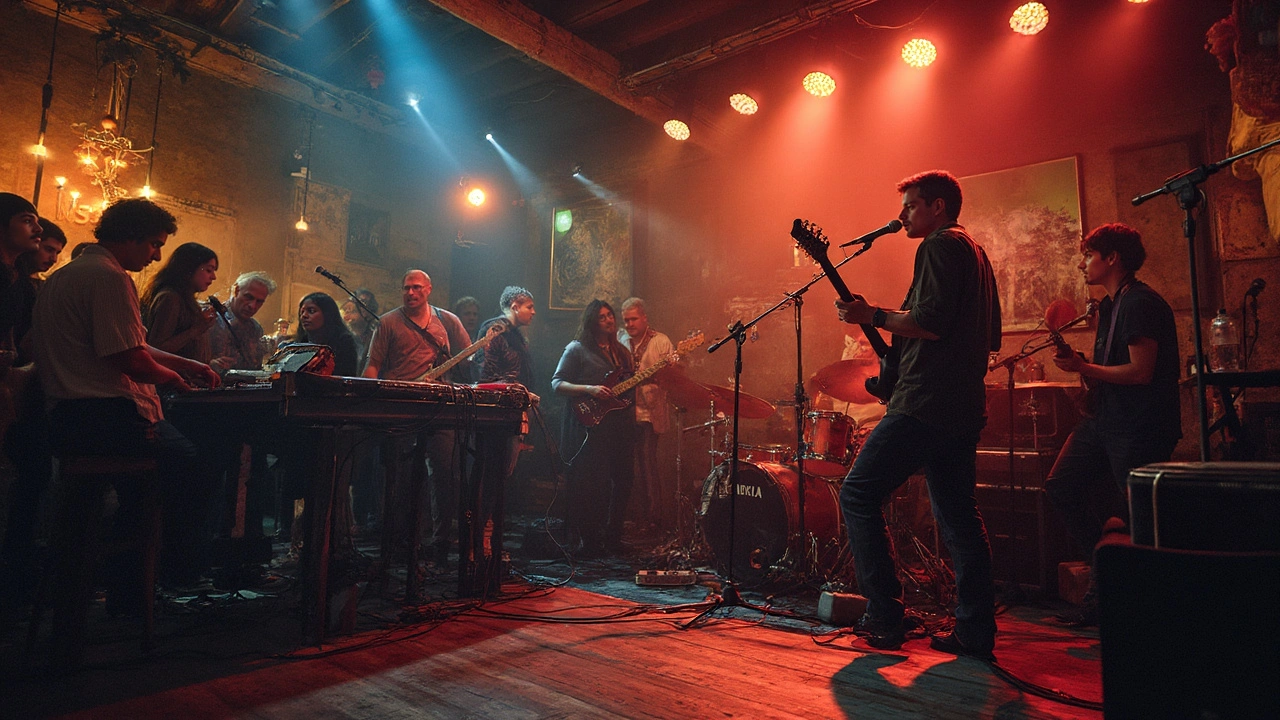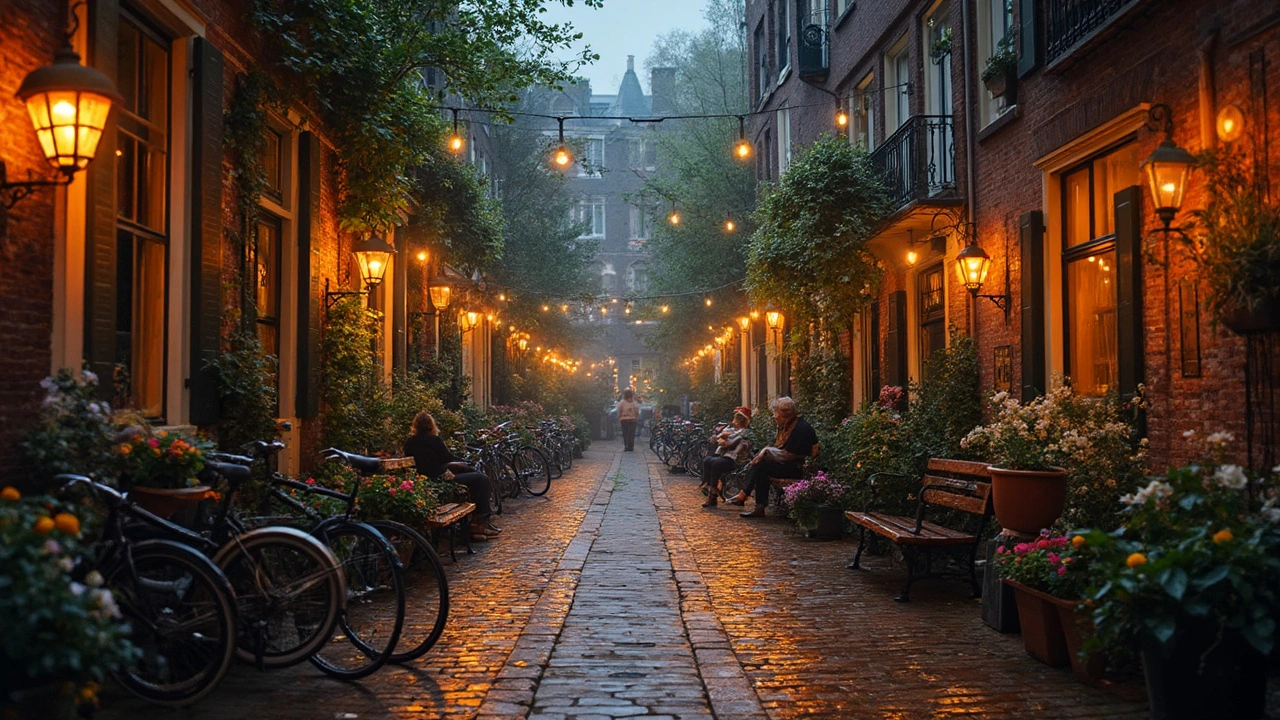
When you think of Amsterdam, odds are, vibrant canals and the famous Red Light District pop into your mind. But here’s the thing—most travelers treat De Wallen as a spectacle, snap some hush-hush phone pics, and call it a night. They’ve no clue what’s lurking just a stone’s throw from those glowing windows. For those curious souls craving more than clichés, the Red Light District hides secrets that you’ll regret missing.
Secret Courtyards, Quirky Bars, and Where Locals Vanish
If your mental checklist only has ‘Red Light windows’ and ‘coffee shops’ next to Amsterdam Red Light District, you’re barely scratching the surface. Toss the stereotypes: tucked between 14th-century alleyways and neon-lit brothels are hush-hush courtyards, cozy brown cafés, and bars where bartenders actually remember your name (yes, even if you tell them you’re just here for two nights).
Let’s start in the Oudezijds Achterburgwal, right by the raucous crowds. Slip beneath the arches near the Oude Kerk and stumble upon the Ons’ Lieve Heer op Solder museum. It’s a 17th-century canal house hiding a gorgeous Catholic church in its attic. For hundreds of years, Catholics worshipped here when religion wasn’t exactly on the up-and-up. Now, you can roam the creaky stairs yourself and see a side of De Wallen most don’t even suspect exists. Pro tip: Go early, as it gets busy after lunch—no surprise, given that its time-frozen interiors have starred in plenty of Dutch films.
Feel like ditching the crowds altogether? The Begijnhof isn’t technically ‘Red Light,’ but walk five minutes and you’re there—think fairy-lit courtyards where locals sip coffee or read, world’s away from stag parties. You won’t find tours shouting about these secret gardens, and the hidden medieval chapel at its core gives serious Hogwarts vibes. Remember, quiet voices—it’s still a lived local haunt.
When twilight hits, skip chain bars. Dive instead into Café Hill Street Blues, famous for its anarchist graffiti and thumping soundtracks. Down the street, Molly Malone’s (the oldest Irish pub in Amsterdam) pours draft Guinness among canal-side regulars. These are watering holes where Amsterdamers come to swap stories after work—they don’t bat an eye at the backpack slung on your chair. Order a bitterballen to nibble with your beer—deep-fried, creamy meatballs you’ll start dreaming about when back in Bristol (trust me, Fiona went through withdrawal after our trip last March).
If you want a true brown café—those dark, wooden throwbacks with tobacco-scented wallpaper—Nieuwmarkt, five minutes from the Red Light windows, has Café de Sluyswacht. Here, you get a sense of what pre-tourist Amsterdam felt like, before Instagram and glassy hotel towers took over. The bar itself leans perilously toward the canal, a survivor of centuries with an old ship’s anchor to keep it tethered. It’s the kind of spot the locals hope you won’t find, but if you promise to keep it hush-hush...
Museums, Bizarre Collections, and Unexpected Art
Most tourists hit the Sex Museum or Erotic Museum, snap a photo, and move along. But Amsterdam’s Red Light District hides a lineup of museums that’ll actually surprise you (and not for the reasons you’d expect). De Wallen has been around forever; it’s packed with quirk and history if you know where to sniff about.
If you’ve any interest in history, Rembrandt’s House (Rembrandthuis) is a short stroll east, but stick to the real hidden gems. Try the Museum of Prostitution, called Red Light Secrets, which invites you—literally—to sit in a real window and imagine the life of a working girl. Add in actual interviews and artifacts. It’s not gawking: there’s empathy and real talk, plus a behind-the-scenes look tourists never get. It’s oddly moving and a whole lot more respectful than standing outside windows, silently gawping.
For a left-field surprise, pop into the Hash, Marijuana & Hemp Museum. Whether or not you dabble, you’ll find incentives to look past the haze. Learn about hemp’s wild history in sailing, textiles, and medicine, and how the Netherlands led the way in smart drug policy. There’s even a wall mapping out cannabis strains that changed the world. Not just for stoners—students from the University of Amsterdam regularly swing by to research policy and history.
Love art, but the Rijksmuseum feels too buttoned-up? The Reflex New Art Gallery, right in the Red Light fringes, hosts temporary exhibitions of edgy modern paintings, digital pieces, and street art. A couple of years back, they even ran collaborations with local tattoo parlors—definitely not what you’d expect when you’re walking between neon hearts and biker bars.
Fancy the absurd? Visit the Electric Ladyland Museum. It bills itself as the world’s first ‘museum of fluorescent art.’ Descend below street level, where everything is glowing or shimmering in ultraviolet light: rocks, sculptures, weird blobby objects. If you’re traveling with kids or the kind of friend who asks “What’s *that*?” every five seconds, you’ll leave with some surreal Instagram stories. Run by a passionate artist named Nick Padalino, this museum makes the list of genuinely strange things you can only experience in Amsterdam.
There’s even a museum dedicated to pipes—yes, just pipes!—showcasing how tobacco and cannabis tools have evolved over several centuries. The Dutch Pipe Museum claims it has the world’s largest collection, including pipes carved in wood, ivory, and even meerschaum. Not only is this stuff quirky, but it also offers a window into how Amsterdam’s residents partied long before legal joints were a thing. If you ever wondered why the Dutch seem so chill about nightlife, one peek into their past and it all makes sense.
Even the main churches hide surprises. Oude Kerk isn’t just a landmark: it hosts cutting-edge art installations in its nave. On my last visit, an entire forest of drifting fog and neon lights filled the central aisle—art you need to see up close, not just on a postcard. Every month, installations rotate, pulling well-heeled locals and in-the-know expats on stormy autumn evenings.
Food and Drink: Iconic Eats and Hidden Feasts
Trust me, nothing hits like a salty, piping-hot stroopwafel after a late-night stroll in bustling De Wallen. But let’s not stop at sugar rushes. If you’re serious about taste, skip the chain stores and pizza slices. The Red Light District is packed with stomach-rumbling street food, tiny restaurants, and Dutch food experiments you won’t forget.
Killer tip: the FEBO vending machines might look tacky, but grab a kroket—breaded ragout that’s crunchy outside and molten inside. Locals swear by them after a night out. Must eat standing up for the full experience. If you spot the Fillet Americain sandwich behind a deli counter, snag it. It’s a spiced raw beef spread, and yes, it’s safe—it’s probably more widely eaten in Amsterdam than peanut butter. Want something sweet? Dutch pancakes (‘poffertjes’) served from street stands are a ritual. The best stands aren’t marked on Google, but if you see locals queuing with kids, join in.
Foodies, don’t miss Zeedijk’s Chinatown. Here’s where you’ll find hole-in-the-wall Szechuan joints, Vietnamese banh mi counters, and a few Surinamese spots cooking fragrant roti and bara. Amsterdam’s Indonesian heritage shines, too—at Kam Yin or Bird Snack Bar, taste a real ‘rijsttafel’: a huge spread with dozens of mini-dishes, a hangover cure and party feast in one.
If you want to say you’ve tried classic Dutch, ask for ‘ossenworst’ at a butcher counter. It’s a local raw beef sausage, lightly smoked and soft as butter. The Dutch eat it for breakfast, lunch, or after football, often with pickles or old-Amsterdam cheese. Follow it with a jenever shot (Dutch gin) at Wynand Fockink, a distillery that’s older than the United States and still serves the stuff just as your great-granddad’s granddad would’ve liked it—lean in to sip from the rim, hands behind your back.
Local tip: In De Wallen, Albert Heijn grocery stores have ‘to-go’ counters with fresh sandwiches and snacks. Load up on classic gouda, sausage rolls, or veggie breakfast wraps—good for riverfront picnics. Conservationists note that grabbing food ‘to go’ and parking by a canal bench is more local than sitting in the expensive terrace bars, which can charge double for the view.
For dessert, look for ice cream shops like IJscuypje. Flavors change seasonally, and the staff will happily nudge you toward weird Dutch combos—don’t knock liquorice gelato until you try it. Chocoholics, step into Tony’s Chocolonely Superstore near the Dam Square. This homegrown Dutch brand is obsessed with ethical chocolate, and you can mix-and-match your own bonbon bar with a wild array of toppings.
If you’re in the Red Light District in winter, chase down a cup of hot chocolate at Metropolitan Deli. They make their own syrup and pile on the whipped cream; a lifesaver in those icy, damp canal winds. Nighttime adventurers can re-energize at late-open spots like Pancakes Amsterdam, where locals split extravagant pancakes after a bar crawl, sometimes at 2am. The best table is by the window—watch late-night revelers and locals pass by while you load up on bacon and cheese, apple and cinnamon, or even smoked salmon pancakes.
Don’t forget: many places are cashless, and big tips aren’t expected—just round up to the nearest euro or drop coins in the pot if you’re happy.
| Food/Drink | Description | Where to Try |
|---|---|---|
| Stroopwafel | Thin caramel-filled waffle | Street stands & bakeries |
| Jenever | Dutch gin | Wynand Fockink Distillery |
| Kroket | Deep-fried beef ragout | FEBO vending, snack bars |
| Rijsttafel | Indonesian rice table feast | Kam Yin, Bird Snack Bar |
| Tony’s Chocolate Bar | Ethical Dutch chocolate | Tony’s Chocolonely Superstore |
Events, Local Scenes, and How to Blend In
Most people show up expecting to see, not to join. It’s a shame, because the Red Light District chucks out as many wild events and mini festivals as anywhere else in Amsterdam, if not more. Whether you like shadowy jazz nights or raucous street parties, there’s always something happening on the cobbles. The trick? Knowing where (and when) to look.
For music, try the Bimhuis jazz club’s late-night sets. Sure, it sits just outside the edge of De Wallen, but local jazz heads headlined by saxophone legends. In summer, Dam Square and Nieuwmarkt become centers of open-air theater—stilt walkers, local bands, and neighborhood street food. The annual Amsterdam Light Festival bursts into life with wild art sculptures right on the canals, starting each November and running into January. These aren’t just for passing tourists—locals wrap up, take mulled wine, and stroll along, letting the art installations guide the route.
Want something randomly fabulous? The Red Light District’s own Pride Boat Parade glides down the canals each August, rainbow-decked barges and all. Expect streets to spill over with partygoers, street musicians, and locals dancing beside the water. You won’t see this back home. And if you’re curious about Dutch King’s Day—from the end of April, locals wear orange for days and Amsterdam explodes in flea markets and canal-side parties. The Red Light District fills with pop-up stands and music. There’s nothing quite like splashing orange along ancient alleys as the city celebrates the birthday of the King.
A hot local tradition is the ‘vrijmarkt’—a city-wide flea market where anyone can spread a rug and sell whatever they like. Want vintage clogs, art prints, or rare vinyl? This is the spot. If you’re into hidden music nights, scan for posters in shop windows: many bars host jam nights or ‘secret’ gigs, some for locals, some open to whoever stumbles in looking friendly.
Of course, blending in is half the fun. The Dutch have a saying—‘Doe normaal’ (just act normal). That means don’t stare at window workers, skip shouting down alleyways, and chuck your cans into a bin rather than the canal (locals are proud of their city, and tourists who respect it get more warm, local banter). Dress for rain, even in July—it’s not rare for a sudden shower to send everyone scuttling beneath neon shopfronts.
And the biggest hack?
“Start early, don’t rush, and be curious,” recommends Amsterdam-based cultural writer Femke Halsema. “There’s no need for a packed itinerary—some of the best things, you just stumble across, especially in a place layered with so much story.”
Treat every side street as a possible adventure. Wander past the greenest canal house, down alleyways with old brass lanterns. Even locals get lost, finding that the real treasure isn’t always in a guidebook. If you see a crowd of Dutchies laughing over board games or crowding around a quiz, join in. That’s how you learn the real spirit of De Wallen—friendly, a bit wild, and always open to new stories.

